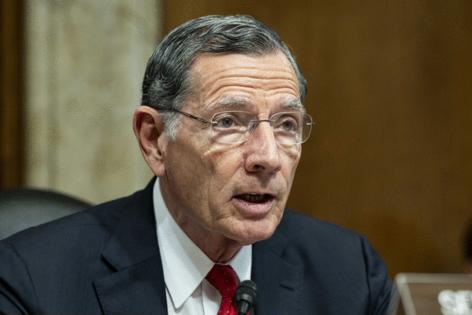EV and renewable companies brace for end of tax credits
Published in Automotive News
WASHINGTON — The electric vehicle and renewable energy industries are bracing for the end of tax credits they had been relying on to rapidly expand the technologies across the U.S.
The phaseout, brought on by the 2025 reconciliation law, hit the EV industry last week with the end of the federal $7,500 tax credit on those vehicles. The renewable energy industry will feel the impact next, as other Biden-administration tax credits supporting production and investment are being phased out faster by the reconciliation law.
Ford Motor Co. CEO Jim Farley said in Detroit last week he “wouldn’t be surprised” if EV sales fell to a market share of 5% after the tax credit ends from around 10% to 12% now.
“I think it’s going to be a vibrant industry, but it’s going to be smaller — way smaller than we thought — especially with the policy change in the tailpipe emissions, plus the $7,500 consumer incentive going away,” he said. “We’re going to find out in a month.”
The tax credit rollback comes on top of the Trump administration’s revamp of the $5 billion National Electric Vehicle Infrastructure formula program created by the 2021 infrastructure law. Transportation Secretary Sean Duffy suspended the program in February, citing wasteful spending, and later relaunched with pared down standards.
“While I don’t agree with subsidizing green energy, we will respect Congress’ will and make sure this program uses federal resources efficiently,” Duffy said in a statement.
In an attempt to soften the blow, automakers Ford and General Motors Co. have plans to use their financing arms to make down payments on EVs in dealers’ inventory, allowing the lending arms to qualify for the federal $7,500 tax credit on those vehicles. As a result, dealers could offer leases with the tax credit over the next few months despite the phaseout.
Republican Sens. Bernie Moreno of Ohio and John Barrasso of Wyoming criticized the car companies’ plans, calling on the Treasury to close the automakers’ “loophole” and saying the plans are a “serious violation of Congressional intent.”
“These electric vehicle subsidies were costing taxpayers billions of dollars each year and distorting the market for automakers and dealers across the country, and we are extremely pleased that Congress acted decisively to cut these credits off,” they wrote in a letter to the Treasury last week. “[IRS] guidance, while well intentioned, is unfortunately being taken advantage of by certain car companies who wish to continue bilking the U.S. taxpayer.”
Despite automakers’ efforts to soften the hits to the EV industry, Ellen Hughes-Cromwick, senior resident fellow in the climate and energy program at the left-center think tank Third Way and a former chief economist at both Ford and the Commerce Department, said in an interview that the combination of the tax credit phaseout and rollback of other federal programs aimed at boosting battery manufacturing and production fares poorly for the industry.
Hughes-Cromwick said she had estimated the EV industry would reach a 50% market share by 2030 with the tax credits and other federal incentives. Now, she estimates it will be capped at 30%.
“It looks like the [auto] companies are going deeper into subprime, and that’s always an indication that sales in general are slowing … and they’re looking to keep the sales pace at a rate that allows them to maybe snowplow a little bit on total revenue,” she said. “We’ve seen several announcements now that these companies are delaying the product cycle for EVs.”
Renewables on deck
The 2025 reconciliation law also put new restrictions on renewable energy production and investment tax credits implemented under a 2022 reconciliation law, moving the timeline to qualify up by several years. Previously, projects needed to begin construction by the end of 2032. Now they must do so by July 4, 2026, or be completed by the end of 2027, to take advantage of the federal support.
“This is an extremely tumultuous time,” said Bonnie Angermeier, senior legislative associate for the Southern Environmental Law Center. “There were promises made by the federal government, and there were strong signals for how they were going to support clean energy development.”
“Essentially, the rug got ripped out from under the clean energy industry,” she added.
Projects able to start construction before next July maintain eligibility for the credits for up to four years, Sean Gallagher, senior vice president of policy for the Solar Energy Industries Association, said. SEIA is the national trade organization representing the solar and battery storage industry.
“The most advantageous position to be in right now is to qualify for that start of construction provision,” Gallagher said. “Companies that can’t qualify for that start of construction — they’ve got to get those projects online by the end of 2027, and so people are working hard to do that.”
Angermeier agreed, noting that companies focused on residential solar are at an even greater disadvantage.
“They have their pedal to the metal trying to complete projects as quickly as possible because they know that the window of that tax credit closes at the end of this year, which was highly unexpected and puts a ton of pressure on them,” she said.
She noted that the changes are “really throwing a wrench” into utility-scale projects as well, which generally rely on longer timelines to move from planning to completion. Some of those have been canceled as a result of the timeline shift, she added.
A solar markets report from SEIA and Wood Mackenzie, a provider of data and analytics for the renewables, energy and natural resources sectors, found that forecasts of new solar deployment through 2030 could be reduced by as much as 55 gigawatts as a result of federal policy changes this year.
Additional grant funding rescissions have also hit the industry hard as billions of dollars of previously allocated funds have been rescinded by the EPA, Department of Energy and other agencies, sometimes after they had already been dispersed.
Angermeier said the changes taken together have led to project cancellations, pauses, layoffs and the cancellation of new jobs that would have come with planned projects.
“We’re going to see a real restriction of new energy supply as a result of both the [reconciliation] bill and the and the administration’s action since the bill was enacted,” Gallagher said. “And of course, we’re seeing this restriction of new supply at a time when energy demand is booming.”
Wind and solar power have recently been among the fastest growing forms of new generation in the U.S., according to an August report from the Energy Information Administration.
While renewables are expected to account for much of the new generation forecast over the next two years, Gallagher said, “the outlook becomes a little bit hazier when you get out to ‘28 and ‘29.”
Even so, he’s not expecting a long-term chilling effect on the industry, because of continued market demand for renewable energy.
The Trump administration says it doesn’t take issue with renewable energy technologies, but with federal subsidies for them.
“Thirty-three years we’ve subsidized wind and solar power in the United States,” Energy Secretary Chris Wright said at a late September press conference. “If you can’t rock on your own after 33 years, maybe that’s not a business that’s going places.”
Wright and other officials say the administration prefers dense, baseload power that they say can respond to increasing energy demand. Wind and solar struggle with intermittency issues and are therefore less reliable than sources of power like natural gas, coal and nuclear energy, they say.
But supporters of renewable energy call that “hypocritical,” noting federal support for oil and gas projects. Renewables subsidies are “really more about creating an even playing field so that we can meet the demand that we have,” Angermeier said.
Gallagher called the administration’s arguments about reliability “tired,” citing the buildout of battery storage to support solar power.
“It was never really a legitimate criticism,” he said. “And it’s all the less so when we have energy storage that can deliver power reliably when the system needs it.”
©2025 CQ-Roll Call, Inc. Visit at rollcall.com. Distributed by Tribune Content Agency, LLC.








Comments